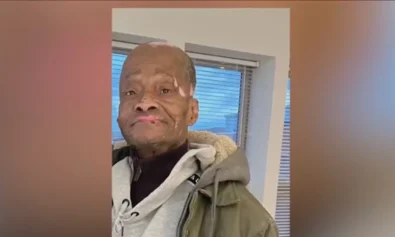A judge found a New Hampshire teenager guilty of violating the state’s civil rights law after he joined other boys in scrawling racial slurs and threatening messages against Black people in his high school, one of which included the name of a Black student who was his best friend.
The Union Leader reported that 17-year-old Edward Ackerly has to perform 100 hours of community service and write a 3,000-word essay that addresses racism. The civil action against Ackerly also sought a $500 fine, but the judge rejected it.
“The point here is not to derail you from having a productive life,” the judge reportedly told Ackerly.

In April 2022, Ackerly scrawled the phrase “Blacks stand no chance” on a bathroom wall inside John Stark Regional High School in Weare.
Another 17-year-old student was accused of drawing a swastika, “KKK,” and a racial slur that read, “Kill n*****s” alongside the name of a Black student at the school. That student behind those scribbles agreed to pay a $500 fine, perform community service, and also write an essay. Another younger student reportedly was involved but is too young for his punishment to be disclosed.
This comes after the Civil Rights Unit of the New Hampshire Attorney General’s Office filed an enforcement action against Ackerly and those two other students involved in September of that year. The civil complaint Attorney General John M. Formella filed alleged that the vandalism was motivated by the race of the Black student whose name was drawn alongside those slurs and that the incident violated that student’s civil rights.
Civil rights violations in the state of New Hampshire carry up to a maximum civil penalty of $5,000. The two students whose punishments were released initially faced fines that ranged from $2,000 to $3,500.
Ackerly was the only student to fight the action in court. His lawyer argued on his behalf that the phrase “Blacks stand no chance” is historically correct, which the judge rejected. While Ackerly does not have to pay the fine, Hillsborough County Superior Court Judge Amy Messer ordered that he will face suspended fines if he does not follow through on his punishment.
“I wasn’t thinking; I’m truly sorry,” Ackerly reported said in court on Tuesday, May 16.
Sharon Houle told the Union Leader that her son, who is biracial, and Ackerly were best friends before he was targeted with the graffiti. They played baseball together when they were younger and held sleepovers.
Her children have been dealing with race-related issues from an early age. She said their grammar school teachers would ask them if other students could touch their hair and friends believed they couldn’t afford trips to Disney or purchase a home.
Houle has said that racist actions are met with a “kids will be kids” response that’s prevalent and normalized within the town.
According to a U.S. Census Bureau July 2022 report, the town of Weare is 97.4 white, and 1.6 percent of residents are two or more races. None of the people who responded to the Census identified as Black.
New Hampshire Department of Education data shows that out of the 673 students enrolled at John Stark Regional High School, 86 percent are white. Just one student is Black, and 12 are mixed race.
When news of the incident reached Houle more than a month after it took place, she and her husband took the issue straight to school administrators. The couple felt the school responded insufficiently. So they took up the matter with district officials at a school board meeting where they requested the district create an advisory committee to handle and prevent discrimination in schools.
School board members approved the parents’ proposal and launched that committee to build community education around all forms of discrimination and include outside advocacy groups and sources.
The Civil Rights Act in New Hampshire states that every citizen can enjoy their rights in the state “without being subject to actual or threatened physical force or violence against them or any other person by actual or threatened damage to or trespass on property when actual or threatened conduct is motivated by race, color, religion, national origin, ancestry, sexual orientation, sex, gender identity, or disability.”
The act defines this kind of physical force and damage as “a communication, by physical conduct or by declaration, of an intent to inflict harm on a person or a person’s property by some unlawful act with a purpose to terrorize or coerce.”
Ackerly’s attorney argued that he never made threats and he’s a special education student who has self-control problems.


